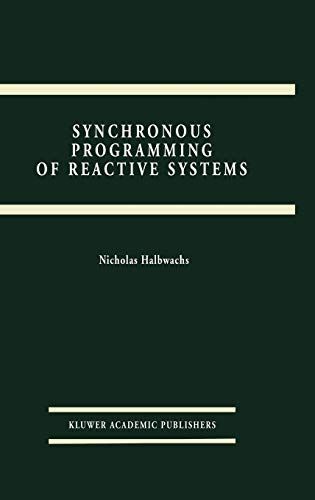
Synchronous Programming of Reactive Systems
This book will attempt to give a first synthesis of recent works con cerning reactive system design. The term "reactive system" has been introduced in order to at'oid the ambiguities often associated with by the term "real-time system," which, although best known and more sugges tive, has been given so many different meanings that it is almost in evitably misunderstood. Industrial process control systems, transporta tion control and supervision systems, signal-processing systems, are ex amples of the systems we have in mind. Although these systems are more and more computerized, it is sur prising to notice that the problem of time in computer science has been studied only recently by "pure" computer scientists. Until the early 1980s, time problems were regarded as the concern of performance evalu ation, or of some (unjustly scorned) "industrial computer engineering," or, at best, of operating systems. A second surprising fact, in contrast, is the growth of research con cerning timed systems during the last decade. The handling of time has suddenly become a fundamental goal for most models of concurrency. In particular, Robin Alilner 's pioneering works about synchronous process algebras gave rise to a school of thought adopting the following abstract point of view: As soon as one admits that a system can instantaneously react to events, i. e.